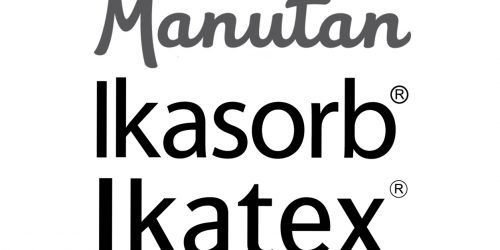How to start a circular economy in business strategy and how to implement it?
In order to meet the challenges of sustainable development and environmental protection on a global scale, companies are building and even accelerating their Corporate Social Responsibility (CSR) strategy. Among the key levers for such an approach, there is a growing interest in the circular economy. And for good reason, because the NGO Circle Economy claims that circular economy strategies could reduce greenhouse gas emissions by up to 39%, limiting global warming to 2°C. This concept, which is opposed to the linear economy of disposability, offers companies lots of opportunities to save money while becoming more efficient, not to mention helping in the fight against climate change. To achieve such benefits, a genuine circular economy strategy needs to be implemented, while following key steps and expert advice.
What is circular economy?
The United Nations provides a comprehensive definition of the circular economy: “Circular economy is a system of production, exchange and sharing enabling social progress, the preservation of natural capital and economic development as defined by the Brundtland Commission. Its ultimate aim is to disconnect economic growth from the depletion of natural resources by creating innovative products, services, business models and public policies, taking into consideration all flows throughout the life of the product or service. This model is based on the optimum use of resources and on creating positive value loops. It focuses on new design, production and consumption methods, extending the service life of products, and the refurbishing and recycling of components.”

The first step in creating a circular economy in business strategy is to analyse the entire value chain so you can see the limitations of the existing linear economic model.
Justine Laurent, Managing Director of Circulab, an independent design studio and strategy consultancy, explains: ”First and foremost, you have to take a step back from your company’s activity and understand the problems that come with the linear economy. This can be characterised by a lack of available resources (raw materials, energy, etc.), the production of too much waste and pollution, a limited product life span, etc. This is how you get those involved to really experience and realise the importance of adopting a circular economy to ensure their business model is sustainable.”
Companies that want to apply this circular economy in business approach need to map out their system. This pre-diagnosis enables them to identify potential risks and opportunities. But we need to remember that the circular economy is above all a response to a problem. It is not a question of rolling out the circular economy everywhere at any cost.
This first step to implementing a circular economy in business strategy does not require any particular expertise. Managers can simply bring everybody involved together (suppliers,
partners, employees, etc.). The idea is to monitor and mobilise your stakeholders’ collective intelligence to come up with solutions.
2. Gradually deploying the circular economy in businesses
After mapping out their system, companies get a clear view of the different ways they can deploy the circular economy. Based on the macroeconomic problems observed, they can design solutions at the microeconomic level. The possibilities are endless. Companies that want to integrate the circular economy in their business strategy can, for example:
- Reduce the production of CO2;
- Use industrial and regional eco-friendly practices and materials;
- Redesign their products’ life cycle;
- Produce more eco-designed goods;
- Opt for a new model based on the functionality economy, etc.
Companies are then in a position to deploy a circular economy policy, or even to build their own circular economy strategy. In both cases, this new initiative must be fully integrated into the business strategy. In fact, it will not work if it is just deployed on the margins of the overall dynamic, led by a dedicated person or team.
Digital transformation is a perfect example. Like the circular economy, everybody should be using digital solutions. These global transformations must permeate all levels and all departments cross-functionally. Because these large-scale projects impact the entire company, they also involve complex change management.
Justine Laurent also advises moving forward step by step: “Because everything has to start somewhere, it’s in the company’s interest to start by experimenting with the circular economy in an area with high potential (buoyant, mature market, etc.). This initial test usually enables them to learn and instil this paradigm shift in the company.”
3. Build on the different success factors
There are four best practices to apply if you want to successfully integrate the circular economy into your business.
Make sure you have an aligned corporate mission
First and foremost, it is crucial that the mission, i.e. the company’s reason for existing, as well as the Corporate Social Responsibility strategy is in line with the principles of the circular economy. This makes such a new and strategic shift meaningful, while naturally feeding into each department’s roadmaps.
Unite all the key people required
All the internal and external stakeholders involved should be included. This means operations, support, procurement, partners, suppliers, management, etc. It is important to remember that solutions are never found within the existing structure, so it is important that you have the
broadest possible vision. This also allows for the exploration and creation of holistic solutions that cover all dimensions of the project in question.
Mobilise teams as early as possible
It is vital to involve employees as early as possible, from the pre-diagnosis phase onwards, so that they can take ownership of the circular transition and cooperate best under these conditions. This may also include training sessions to explore and ensure that everyone has a clear understanding of the issues involved in such a global transformation.
Adopt the right indicators
For this to work, the objectives, measurement tools, and key performance indicators must be in line with the approach. Existing systems and indicators (environmental and resource consumption indicators) may need to be adjusted, but new, more qualitative indicators may also need to be included. This makes it possible both to measure the effects of the actions implemented and to steer the circular economy in business strategy more widely.
In addition to responding to the challenges of eco-friendly and solidarity-based transition, the circular economy in business represents a formidable transformation lever, making companies more competitive and resilient. They need to implement this step by step, collectively and with a systemic approach to create a genuinely circular business.
Download our “Procurement Policy and CSR” whitepaper





